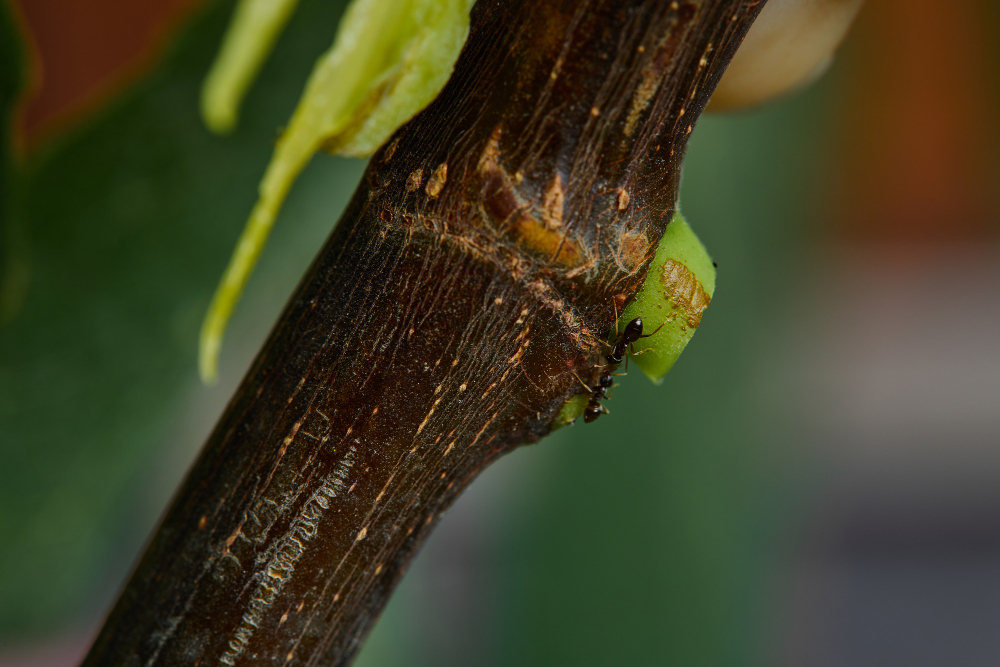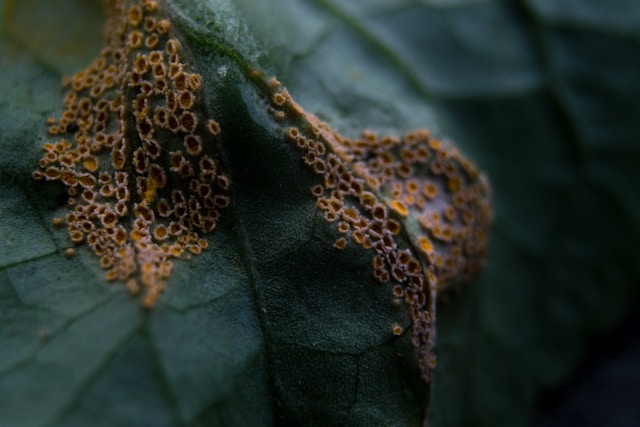Introduction Plant Diseases: Fungi belong to Kingdom Fungi. They do not contain chlorophyll, so they cannot make their own food. Fungi are spread by spores. These spores are spread from one place to another by wind, seeds, , water,, and herbs. When a favorable environment is found, the spores begin to grow and begin the process of obtaining food from the host. Among the fungal diseases, the most important include wilt, downy mildew, carom rot, black spot, rust, and black spot.
Bacteria are very small single-celled microbes. They are also spread through seeds, water and soil.Apart from fungi and bacteria, viruses also damage plants. They are so small that they can only be seen with an electron microscope. Their reproduction takes place inside the body of the host. Viruses cause various diseases in flowering plants.
Its effects can be seen on the whole plant but are more on the buds due to which the growth process in the plants stops. The main source of spread of the virus is seeds. While it is also spread by insects such as whiteflies and thrips. Prevention of the virus is difficult but not impossible.
Name of Plant Diseases:
- wilt 2. Corm Rot 3. Dry rot 4. Black spot
- 5. Powdery Mildew 6. Downy Mildew Rust 7. Nematodes
Wilt:

Wilt Plant diseases Fusarium and Verticillium are the causes of this disease. In case of severe weed, the tissue of the plant is blocked and after some time the plant wilts. The disease is spread through pen and soil. It mostly attacks gerbera, rose, dahlia and carnation.
In case of attack in carnation, lower petioles turn yellow first. Plant growth slows down. After some time the branches and the stem also become dry. Because it attacks more carnations and dahlias, when propagated by cuttings, the cuttings must be disease-free. To control this disease, spraying with fungicides every three weeks is necessary.
2- Corm Rot:
Corm Rot Plant Diseases. It is a fungal disease caused by Botryi gladiorum. In this disease, these round brown oval marks are seen on the leaves and flower petals. Work increases rapidly during storage due to temperature rise. If not properly dried before emerging from the ground, this Plant diseases should also be dried at a temperature of 25 to 30 degrees Celsius immediately after emerging from the ground so that the moisture in the karam comes to a suitable level and around. Powdery mildew can be controlled with a fungicide attractant spray.
Dry Rot:
Dry Rot Plant Diseases. This disease is caused by the fungus Stromatinia gladioli. It mostly attacks gladiolus, freesia,, and saffron. Leaves appear yellow in early attack. Later, the leaves turn brown from top to bottom, and the branch breaks above the corm. The corm does not rot completely, but all the leaves of the plant dry up. This can be controlled by keeping the carom in hot water. While blue muzzle spray is also effective for this. Because the disease is spread through corms and soil, gladiolus should not be replanted in an infected field, or the land should be disinfected before planting.
Black Spot:
Black Spot Plant Diseases. It is a rose disease caused by Diplocarpon rosei. Its attack is more in hot humid areas, its attack is severe in the climatic conditions of Punjab. Black semicircular or black spots develop on the leaves and the rest of the leaf starts turning yellow. In case of severe infestation, the affected leaves fall off. And the process of food formation stops. Therefore, the branches of the plants become weak, and the quality of cut flowers is also affected. To remedy this, it is necessary to destroy the affected leaves. Also, the affected branches should be cut and destroyed. It can be controlled by spraying with Ben Late or Dithene M45 at 15-day intervals.
Powdery Mildew:
Powdery mildew Plant diseases. The disease spreads rapidly in summer. The upper surface of the leaves of infected plants initially shows small white spots which later turn brown. In case of severe attack, the plant becomes very weak and withers. Among ornamental plants, it attacks roses, baguettes, dahlias, African violets, verbena, Poinsettia, sedum, aster, and calendula. The disease spreads from year to year with seeds and tumors. This can be controlled by reducing the humidity in the greenhouse. Apart from this, it can be controlled by spraying with suitable fungicides.
Downy mildew:

Downy mildew Plant diseases It is a fungal disease. It attacks ornamental plants such as roses, dahlias, rhododendrons, marigolds, baguettes, passions and gerberas. It affects the beauty of ornamental plants. Symptoms are initially seen on the lower surface of the leaves. If the temperature is 20 to 25 degrees Celsius and the humidity is above 80%, the disease spreads rapidly.
This disease can be controlled by reducing the humidity ratio in the greenhouse. Apart from this, it can be controlled by spraying suitable fungicides, among which phosphoric acid and mancozeb are more effective. Dahlia It is propagated annually by cuttings and tubers.
Rose Canker:

Rose Canker Plant diseases. This disease is spread by diplodia roseyrum. One of the symptoms is that the branch of the plant begins to dry from the top downwards. Gradually it reaches the dry roots. Older rose plants are more likely to be attacked than new plants. This disease attacks rose plants due to cutting the branches at a distance from the nodes. The affected parts of the plant should be cut off and thrown away, and after pruning, the ends of the cut shoots must be treated with fungicide. Apart from this, spraying of fungicides is necessary for its control.
Rust:

Rust Plant diseases. This disease is caused by fungus. Among the cut flowers, it attacks most of the gladiolus. It also attacks daylilies and roses. It spreads through wind and vegetation. The disease spreads rapidly in the presence of moderate temperatures and high humidity. Therefore, winter cultivation of gladiolus is more attacked when fog is intense. It can be controlled by spraying with cyper vaco nazul. Apart from this, it is also necessary to change the field for cultivation every year to control this disease.
Nematodes:
Nematodes Plant diseases are tiny organisms that can only be seen with a microscope, but their symptoms can also be seen with the naked eye. They are round, pear-shaped, or lemon-shaped. Females produce larvae instead of eggs. They attack the roots, stem, or flower. They remain in the soil and are transferred from one crop to another. In case of their attack, the size of the root cells increases and abscess-like swellings are formed. Nutrient delivery is affected and plant growth is stunted. Apart from this, they also become a source of virus transmission.

